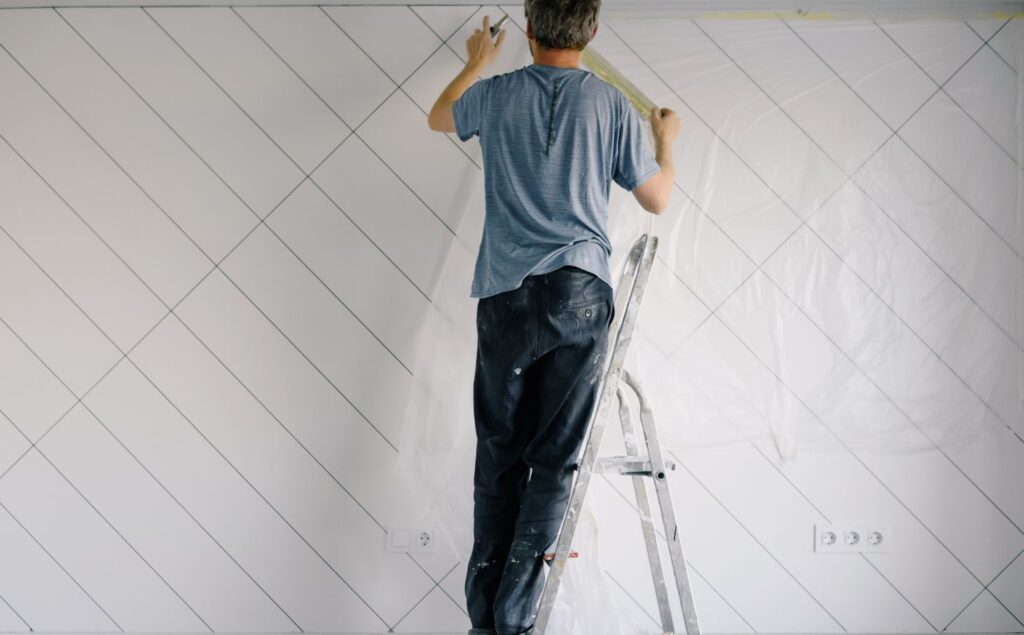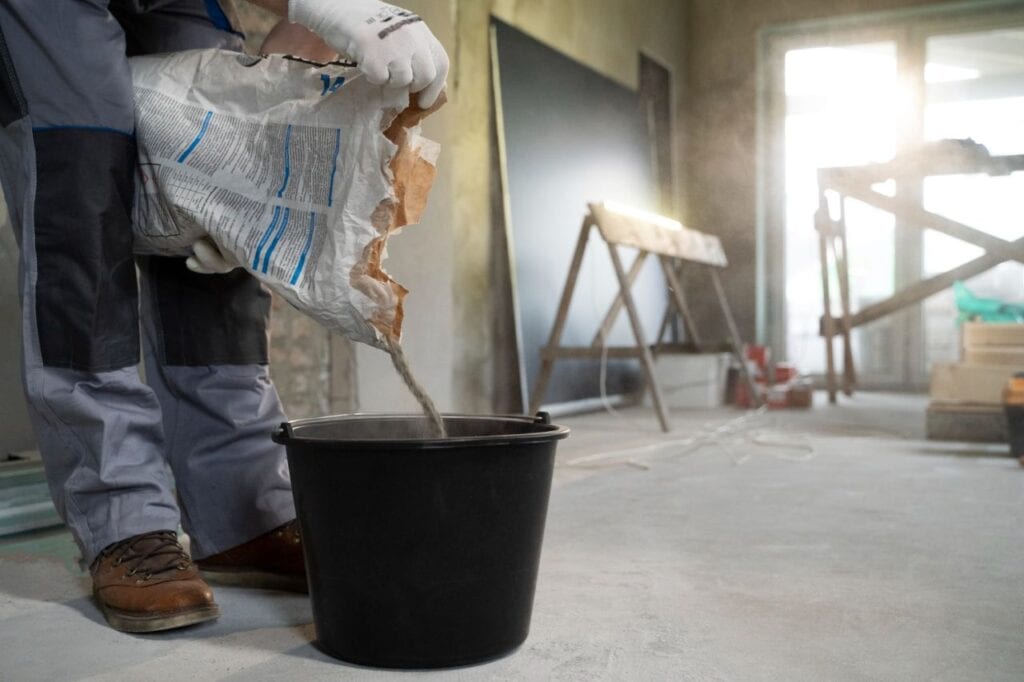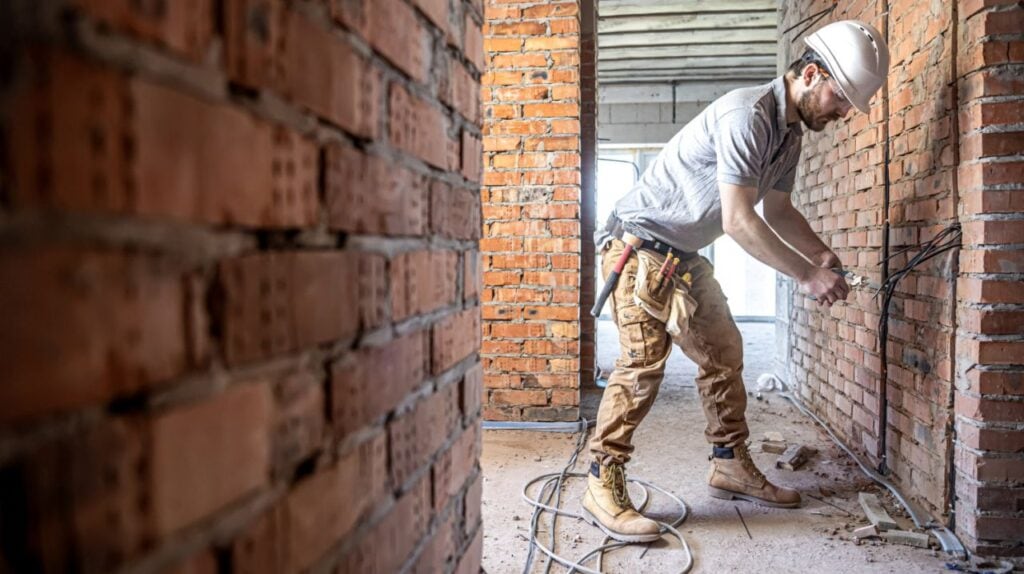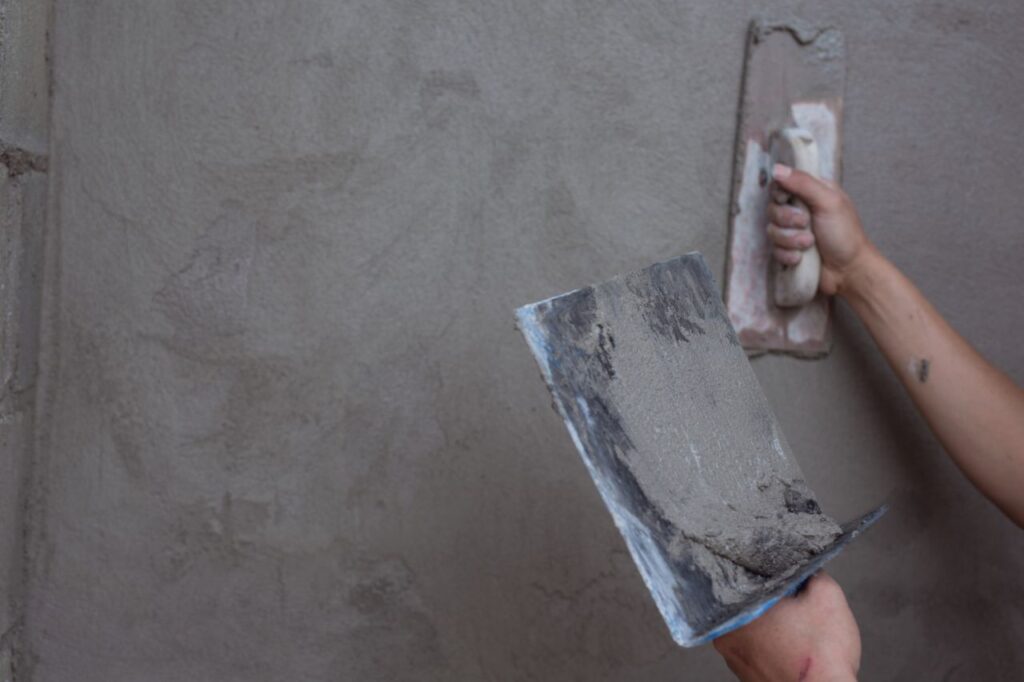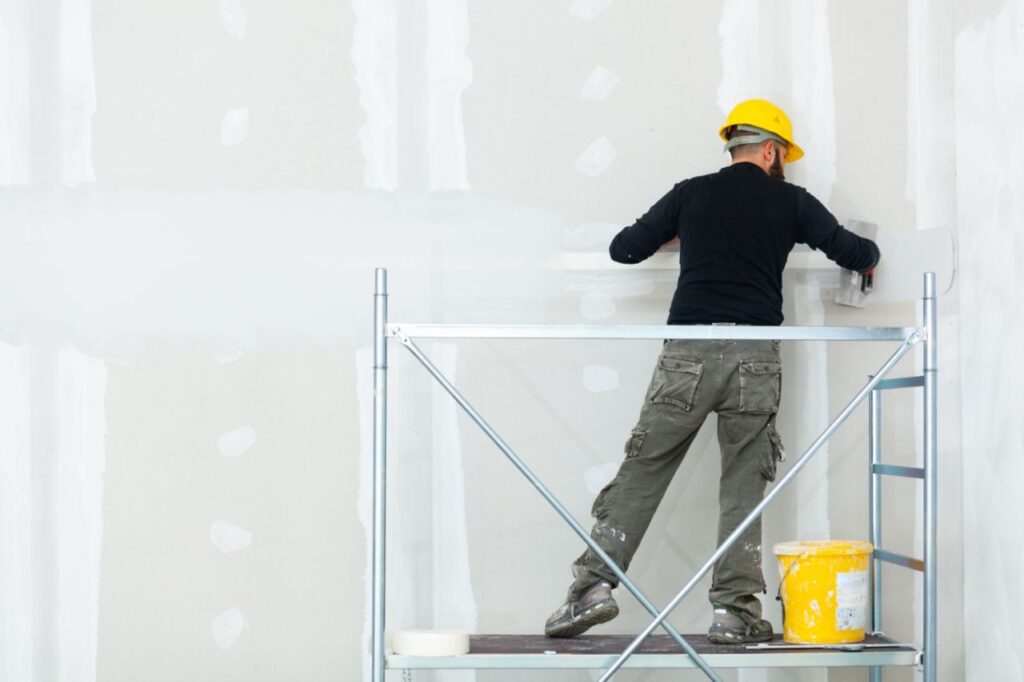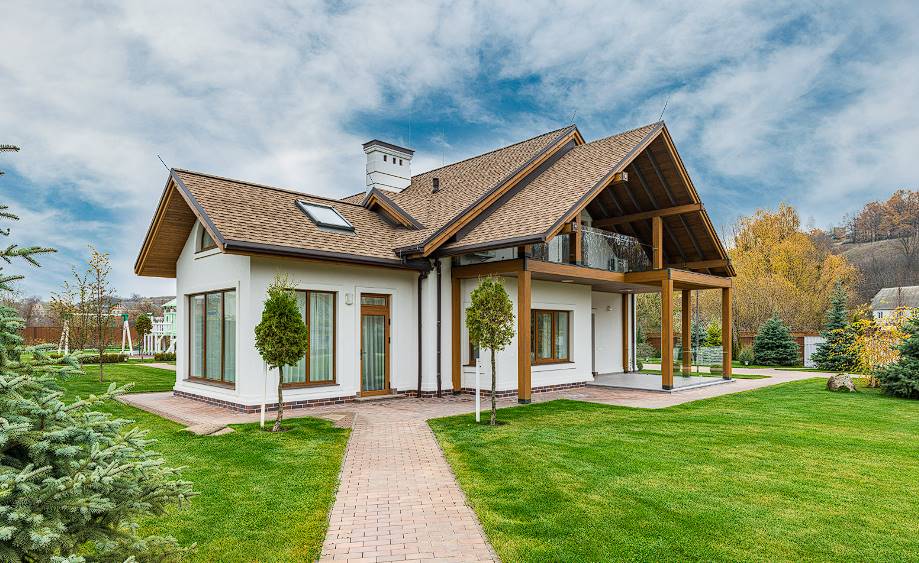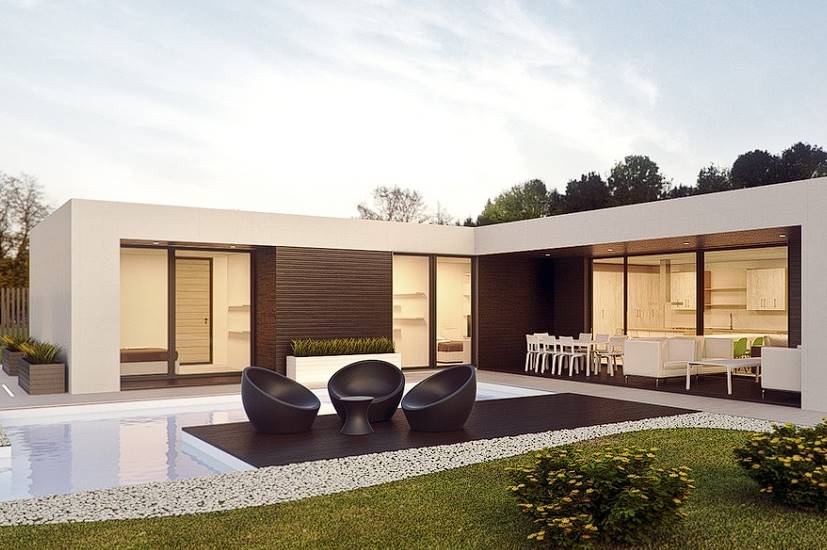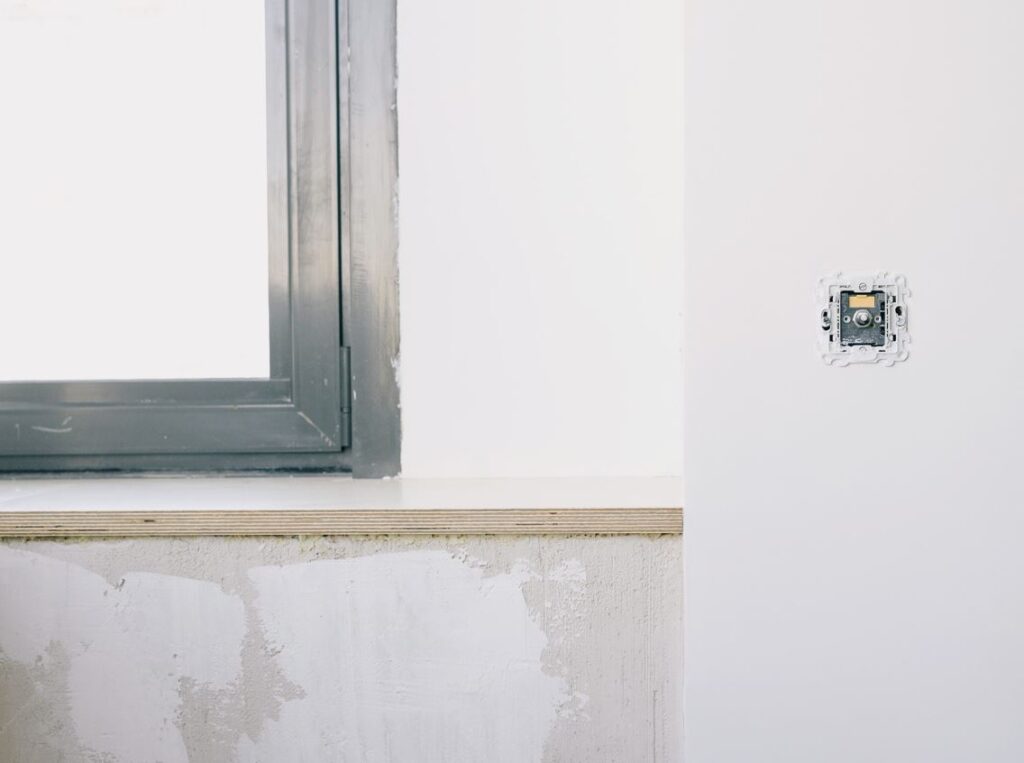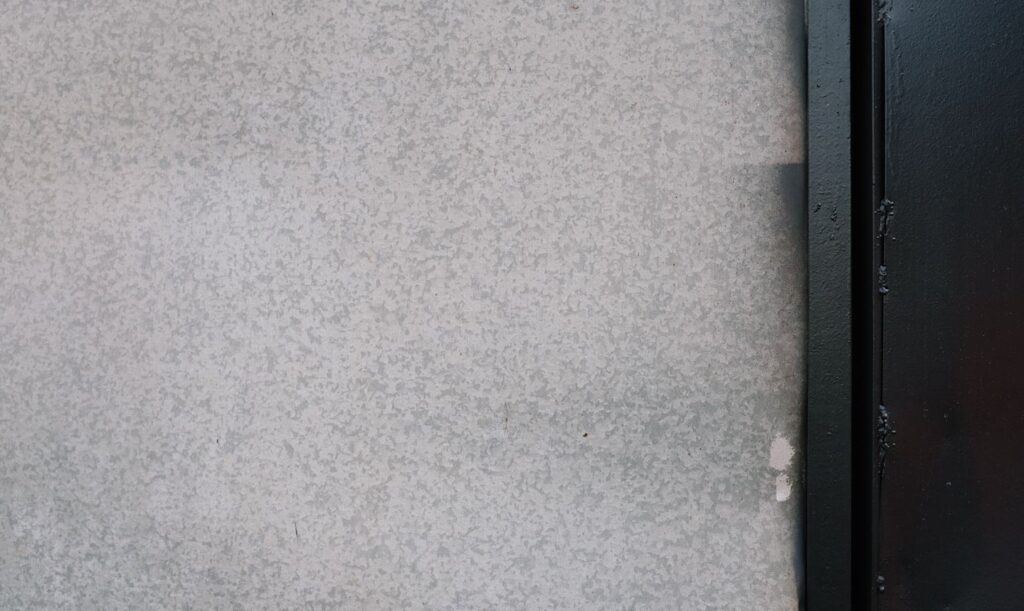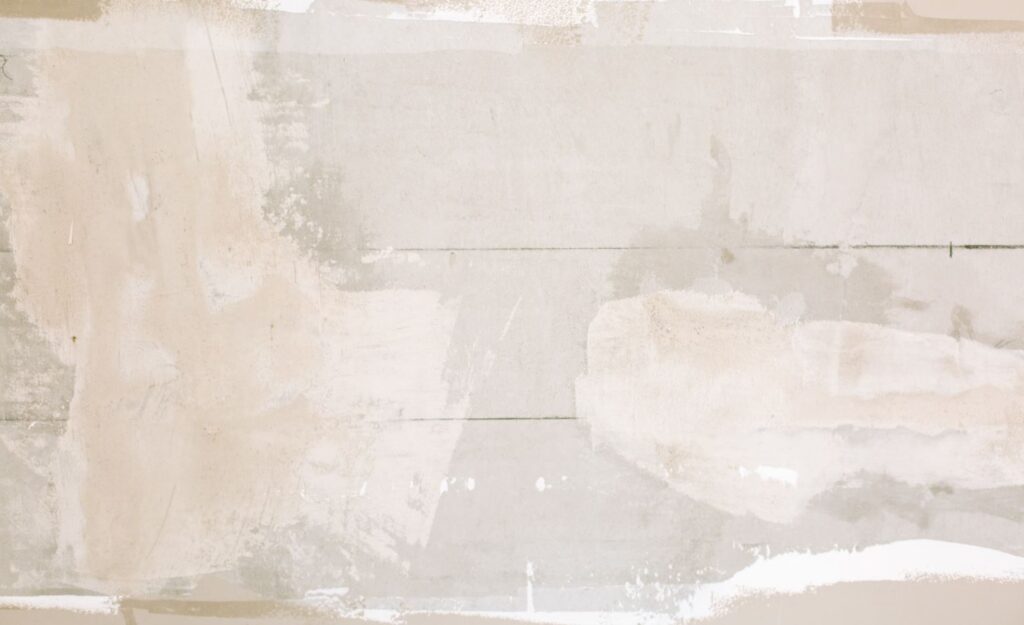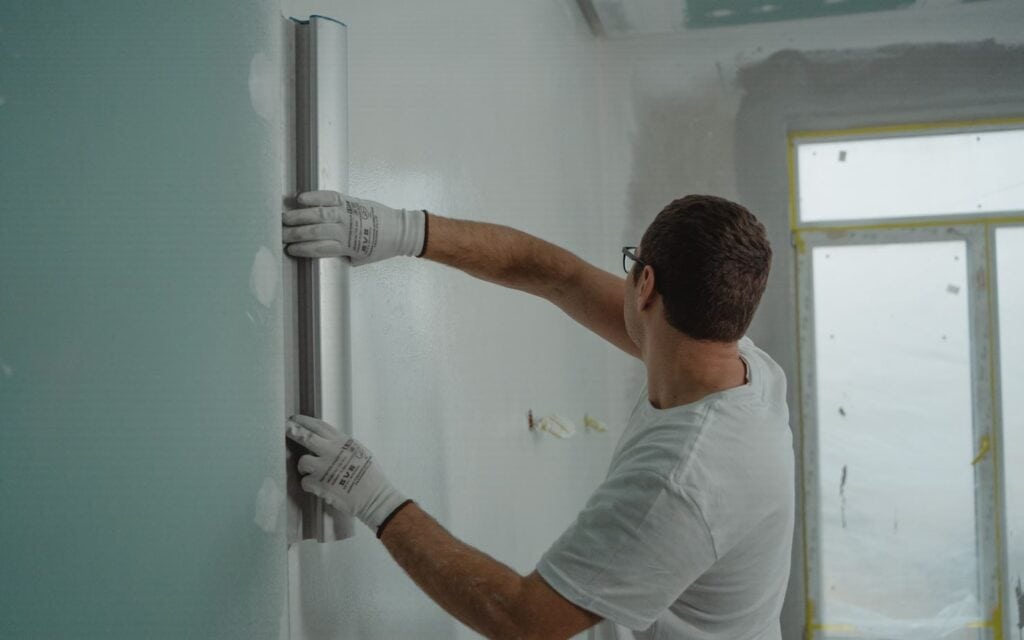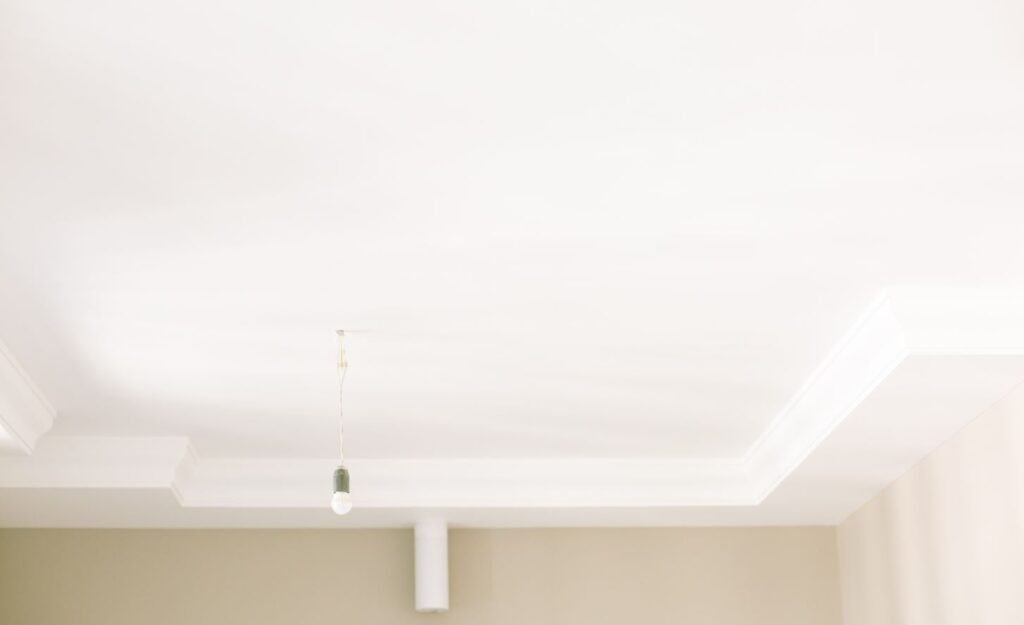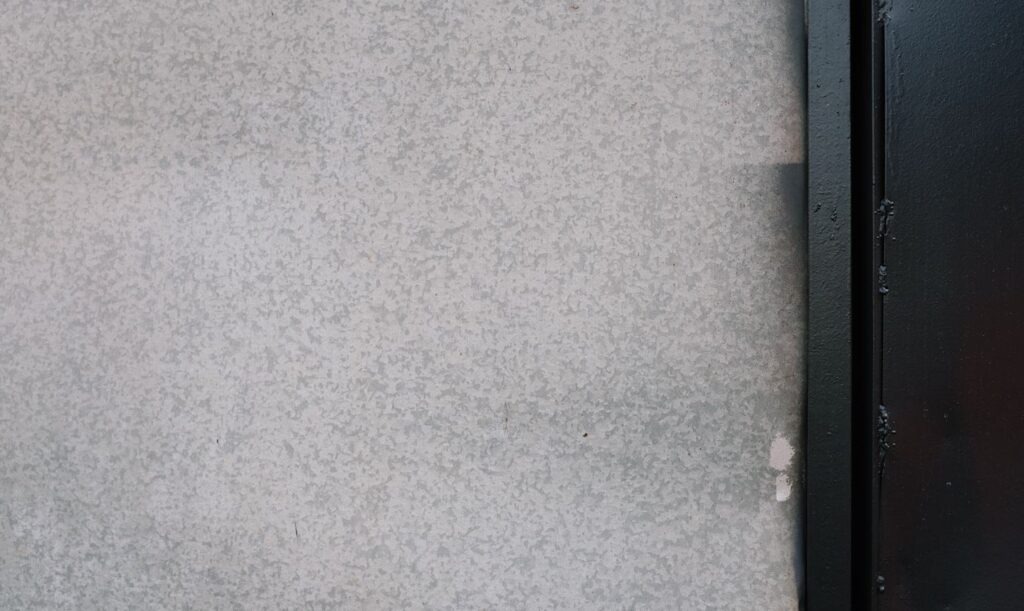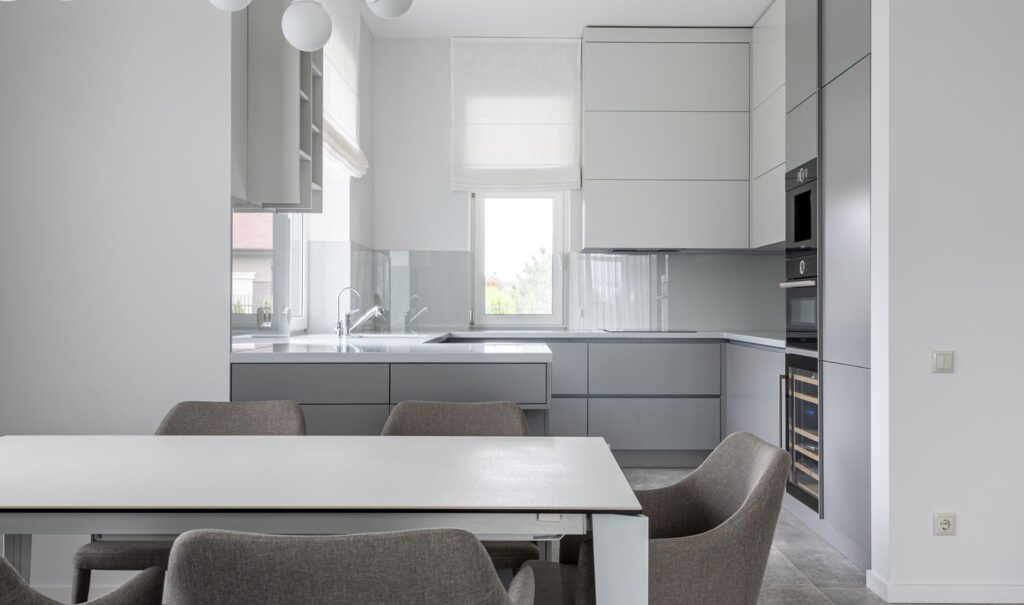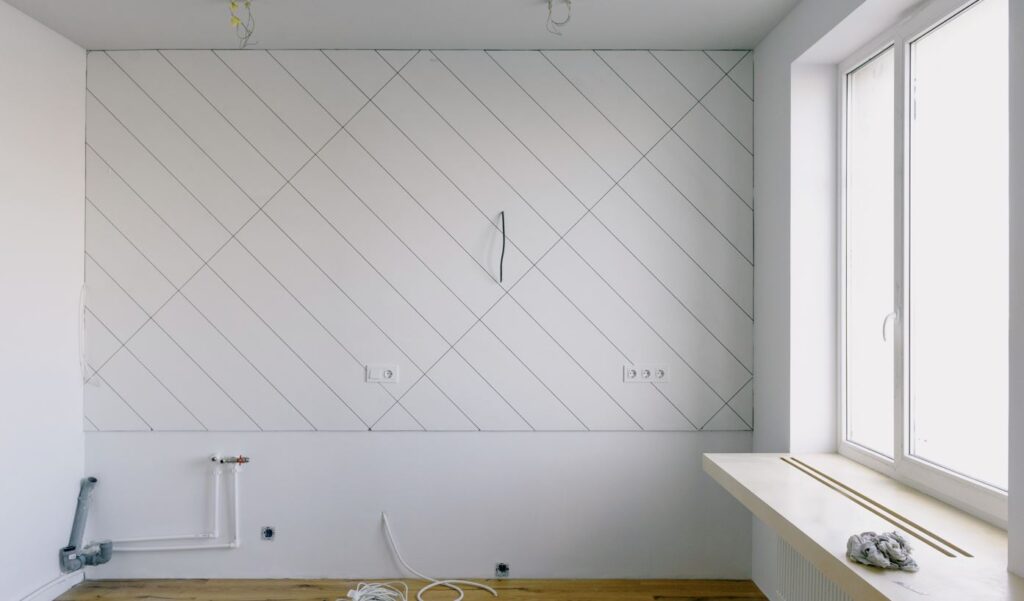Plaster has been utilised for millennia in various building and decorating projects due to its adaptability. Its silky texture and sophisticated ornamentation are well-known strengths. Plaster is typically used indoors on surfaces like walls and ceilings, but many people are curious if it may be used outside as well.
The plaster type and environmental factors play a significant role in determining the answer to such an inquiry. Due to its susceptibility to moisture & temperature changes, traditional gypsum-based plaster, generally used inside, is unsuitable for outdoor applications.
But, outdoor plasters designed to endure the environment and give a long-lasting, aesthetically pleasing finish to exterior surfaces are readily accessible.
This article will discuss the potential for utilising plaster in outdoor settings, including the types of plaster that would be most suited, how to prepare the area properly, and how to keep the area in good condition.
Plaster's Advantages In Outdoor Uses
The following are some of the advantages of utilising plaster in outdoor settings:
- Durability and Weather Resistance: Plaster has a solid reputation for being long-lasting and weatherproof. When applied and coated properly, it creates a barrier that keeps out moisture, sunlight, and temperature fluctuations, guaranteeing long-lasting performance.
- Versatility in Design: Plaster's versatility in design makes it a go-to material for indoor and outdoor use. Plaster allows various textures, patterns, & finishes to be applied to outdoor locations, allowing for personalisation and improving aesthetic appeal.
- Cost-effectiveness: For exterior uses, plaster is frequently the most cost-effective material. It can deliver a high-quality finish for a more economical price, particularly for bigger projects, and requires less upkeep than alternative materials.
- Easy Application: Plastering a wall or ceiling outside is a simple task. It may be applied to many different surfaces with no visible seams or unevenness if the surface is properly prepared, and the application methods are followed.
- Fire Resistance: Plaster's natural resistance to fire makes it a good material for use in settings where fire risk is high. It prevents fire from spreading and safeguards the underlying structure.
- Sound Insulation: Plaster's ability to dampen ambient noise makes it a useful material for constructing soundproof walls. This is helpful whenever we want to enjoy the outdoors in peace.
- Sustainable Material: Plaster is created from all-natural materials like gypsum and lime. Thus, it doesn't hurt the environment. It does not pollute the air or water with any dangerous substances. Plaster's capacity to be reused and recycled is also a boon to green building practices.
Anyone can take advantage of plaster's longevity, design flexibility, cost-effectiveness, and other benefits by employing it in outdoor applications.

The Factors For Plastering Outdoors
Methods For Optimal Application
It is essential to use the correct application methods while applying plaster in outdoor environments. The surface must be properly prepared by sweeping up any loose dirt or dust, washing it with soap and water, and letting it air dry before the plaster can be applied. Plaster failure can be avoided, and improved adhesion can be achieved with the right surface preparation.
Water And Moisture Resistance
Plaster may be compromised in outdoor settings due to exposure to damp and water. Taking precautions against moisture and making the area watertight is crucial. Applying a waterproof coating or using a plaster resistant to water absorption are both viable options. Water collection that could weaken the plaster can be avoided by ensuring adequate drainage systems are still in place.
Repairs And Maintenance
The plaster used in outdoor settings must be maintained and repaired regularly to ensure it lasts as long as possible. Examining the surface regularly for deterioration, like cracks or chips, is essential. The sooner any needed maintenance is completed, the less chance there is of future degradation. Plaster can be kept looking good and protected from stains and discolouration with routine cleaning and resealing.
Climate Considerations
Outdoor plaster can face difficulties in various conditions. For instance, extra care must be used in humid or cold climates. If you want your plaster to last as long as possible and look its best, be sure to use materials and methods that are well-suited to the local climate.
Professional Help And Expertise
It is best to consult an expert if you have doubts about applying or maintaining exterior plaster. Expert contractors or plasterers may help with the process, make sure the work is done right, and suggest upkeep strategies. You can count on their knowledge to get you the look you want and make sure the plaster holds up well in outdoor settings.
By keeping these things in mind and taking the necessary precautions, plaster can be used outdoors with minimal risk of problems and maximum longevity and efficiency.
Plaster's Most Popular Outdoor Uses
- Exterior Wall Finishes: Plaster is a common external wall treatment that provides a smooth, patterned, or ornamental surface. It improves the building's beauty while also providing weather protection. External plaster coatings can be tailored to your architectural style and aesthetic preferences.
- Garden and Landscape Features: Plaster is used to create a variety of garden & landscape features. It is suitable for constructing ornamental statues, ponds, garden walls, & paths. Plaster provides design adaptability and aids in creating visually appealing outdoor environments.
- Decorative Elements: Exterior plaster can be used to make decorative components like cornices, columns, & arches. These architectural elements give buildings elegance and individuality, helping them stick out in their surroundings.
- Outdoor Sculptures: Plaster can be utilised to make outdoor sculptures, giving artists and designers a versatile & moldable material. Its ability to be moulded into complicated shapes and textures enables the construction of one-of-a-kind and visually appealing sculptures.
- Pool and Pond Finishes: Plaster is a common material for the final coat on pools and ponds. The smooth, watertight surface it produces enhances the aesthetic value and durability of these water features. Plaster's malleability allows it to be coloured and textured to suit a wide range of aesthetic needs.
- Outdoor Fireplaces and Chimneys: Outdoor fireplaces & chimneys can be given a decorative touch by having plaster added to them. It serves a dual purpose of improving the building's aesthetics and shielding it from the weather.
- Retaining Walls: Outdoor retaining walls can be finished and made more aesthetically pleasing with plaster. It improves the overall appearance and prevents the internal mechanism from being damaged by the elements.
Some common uses of plaster in the great outdoors include those above. Plaster is often used to improve outdoor areas because of its adaptability, longevity, and aesthetic appeal.
Frequently Asked Questions About Plastering
Frequently Asked Questions About Plastering
Yes, plaster can be used to create or restore outdoor statues. It allows for intricate details and customisation while providing weather resistance.
Yes, plaster can be used on outdoor fireplaces. It adds a decorative finish and protects the underlying structure from the elements.
The lifespan of outdoor plaster depends on various factors, such as the quality of materials used, climate conditions, and maintenance. With proper care, it can last for several years.
Yes, outdoor plaster can be painted using suitable exterior-grade paint. However, it is essential to ensure the plaster is fully cured before applying any paint or coatings.
Plaster is considered an environmentally friendly material as it is non-toxic and does not release harmful chemicals into the environment. Additionally, it can be recycled and reused in some cases.
Plastering Procedures In Outdoor Environments
Surface Preparation
When using plaster in an outdoor location, the first step is to get the surface ready. First, use a stiff brush and pressure washer to remove flaking paint, dirt, and debris from the surface. Make sure the area to be plastered is dry, clean, and devoid of anything that could prevent the plaster from sticking.
Priming (if necessary)
Priming may be necessary depending on the surface's current condition and the plaster used. Priming not only helps the surface adhere better to the plaster, but it can also serve as a barrier here between the two, preventing moisture from seeping through.
Plastering The Surface
Ensure proper plaster mixing according to the manufacturer's instructions. Mix the plaster with water in a clean container or mixer until it forms a smooth, lump-free paste. Plaster should only be mixed in quantities sufficient for use during the allotted working time provided by the manufacturer.
Plaster Application
A scratch coat, a thin layer of plaster, is applied to the surface first. Apply the plaster using a trowel and work in tiny parts at a time to get an even coat. Use a heavy hand when applying the plaster to ensure an even covering and a uniform layer.
Putting The Layers Together
Let the scratch coat dry to the touch but not completely. Apply further coats of plaster, called the brown layer and, indeed, the finish coat, respectively. Every subsequent coat must be applied with meticulous attention to detail as the initial scratch coat. Plaster types and desired finishes can affect the optimal number of layers.
Texturing And Smoothing
It is possible to achieve the appropriate surface finish by smoothing and texturing the plaster after the final layer has been applied. A trowel, sponge, and brush are all useful tools for this task. Textures and patterns can be made using various methods, including troweling, sponging, and brushing.
Drying And Curing
The plaster must dry and cure as directed by the manufacturer. This is usually done by preventing the surface from getting too wet and waiting long enough for the plaster to solidify and set. Please do not touch or disrupt the plaster while it is drying.
Lasting Details
Once the plaster has dried completely, it can be smoothed out and given a final polish. This may involve sanding down any rough spots or applying extra coatings and sealants as required for the task at hand.
Always read and abide by the plaster product's manual before beginning any project. When plastering, it's important to take safety precautions, including wearing gloves and eye protection.
Careful following these procedures will result in a professional and long-lasting plaster finish suitable for outdoor use.

Recommended Practices for Outdoor Plastering
- Using Quality Materials: Spend your money on high-quality plaster products meant for outdoor applications. These materials are more robust and resistant to the elements because they were designed with outdoor use in mind. Plaster can fail or deteriorate quickly if low-quality materials are used.
- Surface Preparation: While applying plaster outside, the surface must be properly prepared. Get rid of any dust, grime, or old coatings, and make sure the surface is dry before you start. Before applying the plaster, make sure the surface is free of any fractures or damage.
- Application Techniques: If you use the right application methods, you may produce professional-quality results. Use a trowel or a sprayer, according to the desired effect, to apply the plaster in a smooth, even layer. Cover the area evenly and keep the plaster from drying out by working in small areas. Follow the manufacturer's suggested application rates and thicknesses.
- Weather Conditions: When applying plaster, it's important to consider the weather. Plastering should be avoided during periods of high heat or humidity or when the weather is unfavourable. Plaster's curing and drying time may be slowed or halted by these factors, resulting in poor adherence or cracking.
- Curing and Drying Time: Before applying any stress or other treatments, be sure the plaster has had enough time to dry and cure. Curing and drying times should be as specified by the manufacturer. Do not touch or disturb the plaster throughout that time since doing so could cause damage.
- Regular Inspection and Maintenance: Plastered surfaces should be checked regularly for deterioration, cracks, and wear. Take care of problems as soon as possible to stop their worsening. Plaster should be cleaned and resealed regularly to preserve appearance and prevent stains and discolouration.
- Hiring Professional Contractors: Hiring expert contractors with experience dealing with plaster is recommended for intricate or extensive exterior plastering projects. They are well-versed in the application procedure, so you can rest assured that the result will be excellent. Plaster may be made to last longer with the help of professional contractors, who can also offer guidance on care and upkeep.
- Regular Cleaning: Plaster exposed to the elements may become stained or damaged due to the buildup of dirt, dust, or other contaminants. Keep the surfaces clean regularly by using gentle cleaning procedures designed for the particular type of plaster. To protect the plaster finish, never use harsh chemicals and abrasive cleaning instruments.
- Protection from Impact and Accidental Damage: You should prevent unintentional harm to the plastered surfaces. Please don't put anything too heavy on the plaster or drop anything on it. Protect surfaces with barriers or coverings as necessary to avoid scrapes.
If you follow these guidelines, your outdoor plaster job will look great as last year's. By following these guidelines, you may keep the plaster looking good and functioning well for the coming years.
Conclusion
Plaster's malleability, velvety texture, and refined ornamentation have made it a staple in construction and decoration for centuries. Its versatility and weather resistance makes it suitable for both indoor and outdoor applications, however it is most commonly used indoors on walls and ceilings. Plaster's adaptability as a building material makes it possible to enhance the visual attractiveness of outdoor spaces by applying a variety of textures, patterns, and finishes. It provides a high-quality finish at a cheaper price, making it the most cost-effective material for external applications. Plaster's smooth, even finish makes it a great choice for use in the great outdoors.
Proper surface preparation, such as sweeping off loose dirt, cleaning it with soap and water, and letting it air dry, is required for a successful plaster application. Protections against water and moisture absorption are necessary, thus waterproofing your home is a top priority. Plaster needs regular maintenance and repairs to last as long as feasible.
When using plaster outside, it's important to keep the weather in mind and take extra precautions if the area is very damp or chilly. If you want to make sure your plaster works well outside, you should hire a professional. The façade of a building, as well as its garden, landscaping, decorative components, outdoor sculptures, pool and pond finishes, outdoor fireplaces and chimneys, and retaining walls, are all popular areas to find plaster.
Plaster can be used outside, but it must be prepared, primed, and applied in accordance with the manufacturer's instructions. This will improve the surface's ability to cling to the plaster and seal out moisture. Retaining walls can also benefit from the use of plaster to enhance their aesthetics and protect them from the weather. When applying a scratch coat, it's best to do so in small sections at a time with a trowel to ensure an even finish. We then proceed to apply the brown layer and the final coat with painstaking precision.
Tool options for texturing and smoothing include trowel, sponge, and brush. Plaster needs to dry and cure as per the manufacturer's guidelines, which means keeping it dry and away from moisture until it hardens. Once it's dried, you can give it a shine by sanding or adding further coats and sealants.
The use of high-quality materials, careful surface preparation, the appropriate application of techniques, consideration of weather conditions, and adequate drying and curing time will result in a professional and long-lasting plaster finish appropriate for outdoor usage. In order to forestall damage, cracks, and wear, it is crucial to perform routine checks and maintenance. For complicated or extensive plastering jobs, it is best to hire expert professionals. Preventing damage from dirt, dust, or other contaminants requires regular cleaning. Preventing unintentional harm requires taking precautions against impact and accidental damage to surfaces. If you adhere to these rules, your outdoor plaster project will survive for many years and look wonderful.
Content Summary
- Plaster can be used outdoors, but the type of plaster and environmental factors must be considered.
- Traditional gypsum-based plaster used indoors is not suitable for outdoor applications due to moisture and temperature changes.
- Outdoor plasters designed for durability and weather resistance are available.
- Plaster offers advantages such as durability, weather resistance, versatility in design, and cost-effectiveness in outdoor uses.
- Proper surface preparation is crucial for successful plastering outdoors.
- Waterproof coatings or water-resistant plaster can protect against moisture damage.
- Regular maintenance and repairs are necessary to prolong the lifespan of outdoor plaster.
- Climate considerations should be taken into account when using plaster outdoors.
- Consulting an expert or professional can ensure proper application and maintenance of outdoor plaster.
- Plaster made from all-natural materials supports sustainability and environmental responsibility.
- Plastering outdoors can enhance the aesthetic appeal and longevity of surfaces.
- Plaster can be used for exterior wall finishes, garden features, decorative elements, outdoor sculptures, pool and pond finishes, fireplaces and chimneys, and retaining walls.
- Surface preparation involves cleaning the area and removing any loose debris before plastering.
- Priming may be necessary to improve adhesion and prevent moisture seepage.
- Proper plaster mixing and application techniques are essential for a smooth and even finish.
- Texturing and smoothing techniques can be used to achieve the desired surface finish.
- Drying and curing times should be followed as specified by the manufacturer.
- Regular inspections and maintenance are necessary to identify and address any issues with the plaster.
- Using high-quality materials designed for outdoor use is important for durability.
- Weather conditions should be considered when plastering outdoors.
- Curing and drying times should be respected to ensure proper adherence and prevent damage.
- Regular cleaning using appropriate methods is necessary to maintain the appearance of outdoor plaster.
- Protection from impact and accidental damage is important to preserve the plastered surfaces.
- Hiring professional contractors with experience in outdoor plastering is recommended for complex projects.
- Outdoor plastering can provide a smooth, patterned, or ornamental surface for exterior walls.
- Plaster is versatile and can be used to create garden and landscape features.
- Decorative elements such as cornices, columns, and arches can be made with plaster.
- Outdoor sculptures can be created using plaster due to its moldable nature.
- Plaster is commonly used for pool and pond finishes to enhance their aesthetic value.
- Outdoor fireplaces and chimneys can be adorned with plaster for both decorative and protective purposes.
- Plaster can improve the appearance of retaining walls in outdoor settings.
- Plastering procedures for outdoor environments involve surface preparation, priming, plaster application, texturing, and drying.
- Following manufacturer instructions and safety precautions is crucial when plastering outdoors.
- High-quality materials are recommended for outdoor plastering to ensure longevity.
- Surface preparation involves cleaning and removing any loose debris before plastering.
- Priming can improve adhesion and prevent moisture damage.
- Proper plaster mixing and application techniques are necessary for a professional finish.
- Weather conditions should be considered to avoid problems with plastering outdoors.
- Curing and drying times should be followed to ensure proper adhesion and durability.
- Regular inspections and maintenance are important to address any issues promptly.
- Professional contractors can provide expertise and guidance for outdoor plastering projects.
- Regular cleaning using appropriate methods is necessary to maintain the appearance of outdoor plaster.
- Outdoor plastering can be cost-effective compared to alternative materials.
- Plaster made from natural materials is a sustainable choice for outdoor applications.
- Proper surface preparation is key to achieving a successful outdoor plastering project.
- Regular maintenance and repairs can prolong the lifespan of outdoor plaster.
- Climate considerations should be taken into account for outdoor plastering projects.
- Professional contractors can ensure the proper application and maintenance of outdoor plaster.
- Outdoor plaster can be used for various applications, including walls, decorative elements, sculptures, and water features.

